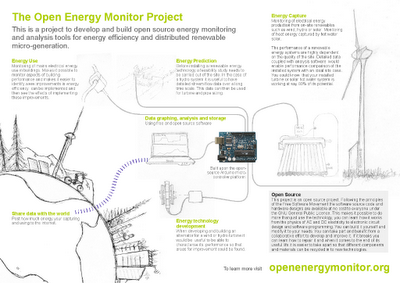Now that both the
North Wales and
Cardiff EWB wind turbines have been built, it would be good to have some sort of laptop based graphical output of the power produced from the wind turbine when its taken up to a site for testing and so I have been looking at how to modify the
OpenEnergyMonitor design to do that.
The wind turbine creates 12V DC electricity. It can produce up to around 500W of power, about 40Amps.
I have decided to go along the invasive current sensing route with a sense resistor (also known as a shunt). When dealing with such high currents the sense resistor needs to be quite beefy! Here's a picture of my test setup using a computer power supply to simulate the wind turbine and a 50W halogen as a load. The large block in the middle is the
sense resistor.

I'm now on the stage of getting parts for a circuit that will allow the
Arduino to read the voltage across the sense resistor.
I came across quite a lot of good circuit examples and advice on the linear technologies website
here.
Im thinking of following the battery current monitor circuit which can be found in their
DC pdf. Here's the schematic
:
It can measure both current flowing in to the battery when the wind turbine is generating and current flowing out of the battery when there are loads connected.
I will post up the results once its built, I also need to make a load that can vary between 0 and 500W so it can be tested properly, the current plan is to make that load from a mini 12V kettle and a mixture of 50W 20W and 10W halogen bulbs all of which can be turned on and off from the
Arduino. Should be fun!
If anyone has any experience with
renewables and DC current measuring circuits I would be glad of any suggestions on any of the above.






